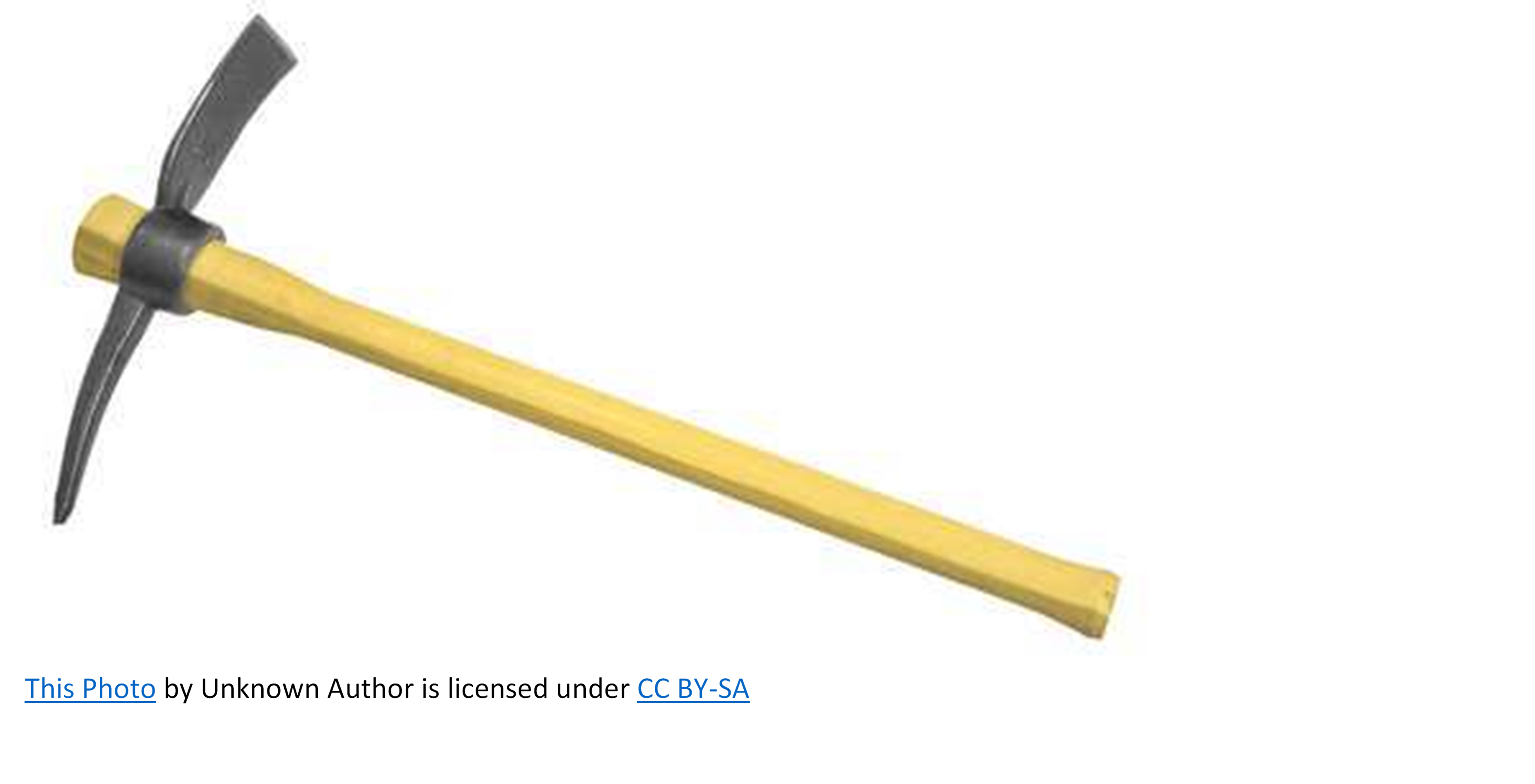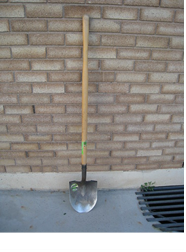Gardening on Clay
Gardening on Clay
Soil is categorised by the size of the particles of broken-down rock that make up its texture. It is the percentage of these aggregates in combination that defines your soil texture.
Sand is between 0.06 – 2 mm in diameter. It is grainy to the touch and due to its irregular shape will allow the free passage of water and air between the grains. Mostly, it is composed of quartz, often coated in a small layer of Iron oxide, which gives rise to its range of colours. Sand grains are not porous so water can drain freely between the particles and all water present is available for take up by the plants. It should be noted that the finer the grains of sand the more water can be held by means of gravity. Sand grains are inert, meaning they are not sticky and will not hold onto plant nutrients.
Silt ranges from 0.002 to 0.06 mm in diameter and tends to be non-porous and so acts like a fine sand. However due their smaller size they have a good water holding capacity but that same water is also easily taken up by the plants. Approximately 15% of the particles of silt share some of the properties of clay and will yield some nutrients to the plants. However, they can also hold onto some of the nutrients but to lesser extent.
Clay is unusual in that it can be made up of many different types, i.e. Kaolinite, Vermiculite, Mica and Montmorillonite. This means that not all clay soils are the same in colour or pH. The particles are very small, 0.002 mm and below. They are all derived from rocks by means of weathering rather than friction. The other notable differences are that their small size means that the minute electrical forces on the surfaces become dominant. This gives clay the properties of cohesion, plasticity, shrinkage and swelling. The small particles pack and stick together in flat layers called lattices which expand when mixed with water and shrink when that water dissipates. Thus, the hard, cracked appearance of clay soils in summer and the sticky, heavy mass in winter. Most clay particles are porous and as they are packed together so closely they restrict the movement of water, so drainage and waterlogging can be a real issue. The other problem is that the water is held so tightly it can be hard for plants to extract. Another issue that those of you gardening on clay soil will have encountered, is that it is easy to polish clay soil. That very quality means that it is easy to create a mechanical pan, by which the layer of clay becomes so finely compacted that water cannot drain through it and air is unable to penetrate. This leads us nicely in to Soil structure.
Soil structure defines the way the aggregates (Sand, Silt and Clay) are arranged in the soil and the effect that has on the growth of plants.
A good soil structure would allow easy gaseous exchange between the soil particles, and provide an adequate supply of available water.
Plants roots, and the organisms that are present in soil, live in the gaps between the soil particles. Large cavities between the particles would prevent good contact between the roots and the soil and could cause the roots to dry out. So, it would follow that the soil would have large enough pores to allow air and water to move between them, but not so large that the water would drain straight through. This arrangement is commonly known as a tilth and managing your soil is the way to create that perfect balance of cohesion and porosity.
A dusty tilth, i.e. sand will allow water and nutrients to flow between the particles unhindered. These kinds of soils can be easily washed away resulting in erosion.
An ideal or fine tilth, will have the space taken up by the soil and the pores between the soil in balance. This allows the free exploration of roots. Micro-organisms and roots will also have adequate air porosity to ensure a heathy soil environment.
Heavy soils are not heavy in themselves, but are described that way because they are heavy to work.
So, managing your clay soil is the way to ensure your soil is healthy and your plants remain that way too.
Improving drainage, a subject large enough for an entire talk, is often a major consideration on clay soils. If you have this problem, it is wise to do some investigation before deciding on a plan of action.
Find out about the water table in your area. If it is high. i.e. close to the surface and regularly floods or becomes water logged, laying drainage is probably going to be the option. Always get advice before undertaking this job. It may be a case of just providing a soakaway to allow the excess water to drain away slowly. However more severe problems could involve the laying of land drains and removing the water to storage containers buried underground or getting permission to drain into a ditch. Draining onto public highways, rivers or streams is illegal. Localised areas of poor draining or water logging could however be the result of a soil pan and we will deal with this later.
Cultivation
Soil cultivation is undertaken to produce a suitable root environment for plants. To avoid injuries, always do this incrementally. Little and often is better than attempting to manage all the soil in your garden at one time and possibly putting yourself off gardening for life.
Cultivation means breaking up the soil into finer sized clods, removing weeds and adding organic matter and fertilizers if needed. Be aware that rotavators can massively impact your clay soil and in the first instance they should be avoided. Firstly, they can break up the roots of pernicious weeds, thus allowing them to start growing all over the site. More importantly, their movement can directly lead to the formation of soil pans. They rotate at a constant depth and, in clay, can polish the soil at the bottom into a hard, impermeable layer that could prevent drainage and stop roots from penetrating.
If there is already a pan in your soil, you will need to undertake double digging. An arduous task, used to break up the hardened layer. It involves to removal of a layer of soil to the depth of a spade’s blade, then breaking up the soil beneath with a fork or other tool. It should be noted that you do not remove this second layer from its position, you just break it up. This is because you do not want or need to bring the sub soil to the surface. If you have a very large area of compacted soil then a subsoiler or under loosening cultivator, can be hired and drawn, usually by a tractor through the site.
If you don’t have a pan, then the job for you is to turn over the top soil and incorporate any organic matter that is required. A good time to do this is late Autumn or early Winter as the large unbroken clods can be left on the surface for the frost to break down into more manageable sizes for you.
Humus or rotted vegetable matter is massively important and it helps to incorporate some nutrients and micro-organisms in to the soil but also to open the soil to air and to prevent compaction. However, humus is itself sticky and holds moisture, so the incorporation of well-rotted compost should be avoided. Instead use partially rotten, coarse textured material in which the ingredients are still identifiable, i.e. partially decomposed leaves, bark and straw, etc.
To further improve the soil a thick layer of this can be laid on the surface of the soil each subsequent Autumn or Spring. This will help to hold in moisture, stop the soil from getting quite so cold, encourage ground fauna and replace the previously applied compost which may have finally broken down into gas and air. Also, laying a layer of mulch each year is infinitely preferable to having to start all over again with heavy clay once all that initial compost has gone. By adding this kind of mulch yearly, you will, after approximately three years find yourself with a rich, free draining, healthy loam that is easier to plant and some immeasurably happier plants. Melcourt Farmyard is a peat and manure free soil improver that is ideal for this. Do not use peat. It will not incorporate into the soil or improve it in any way.
A note of caution. Please be very sure of the pH of your soil as adding some this like Clay breaker and mushroom compost could increase the alkalinity of your soil. It is not possible to permanently lower the pH of your soil due to the reaction of acid on the release of calcium.
Pro-grow, made by Hampshire County Council from the collected green waste of our gardens is a great idea in principle, but having seen some peoples’ insistence on the over use of chemicals, I would be wary of what you may be importing.
Similarly, be sure that your purchase of chipped bark from your local tree surgeons is not made from diseased trees. Most tree surgeons would never do this but buyer beware.
Farmyard manure is to be avoided unless you know exactly where is comes from and how those animals are raised. Hormones are incredibly powerful substances that can have far reaching consequences in nature and are often used in the production of animals for meat.
Finally, by collecting and composting your own green waste, not only are you reducing your carbon foot print but you will also be increasing mycorrhizal fungus colonies that are native to your own soil, thus protecting the ecological balance of your garden. Mycorrhiza are a collection of beneficial fungi that create symbiotic relationships with many of our plants. In short, they inject themselves into the roots of the plants but then grow quickly into a much larger area than the roots, to exchange water and nutrients in return for a few sugars.
To be healthy, plants need access to adequate sources of light, warmth, food and moisture. The pH of your soil will determine which nutrients are available to your plant. Replacing soil with that of a different pH is never a long-term solution, as the pH is defined by the ground water than moves up through the parental layer of rock at the base of your soil and will return your new soil to its original pH over time. If you still wish to do this, be aware that you will need to continue this practice and monitor the nutrient levels in your soil constantly adjusting as needed. Also, approximately 70% of the water taken up by your plants over the year is not from watering or rain, but is in fact ground water that rises through the soil by capillary action. Containers are an obvious exception to this.
Tools
With its potential for compaction and the heaviness of working with clay soils, it is imperative to use the correct tools for the job in hand. It is easy to, not only, break your spades or forks when working compacted soils, but also yourself. Back injuries are common but long-term issues like carpel tunnel syndrome need to be avoided. So, if you need to break up or cultivate heavy soils you should, as previously stated work in short bursts, but also use the right tool for the job.
A mattock is ideal for this, as its heavy flat blade will cut down into the soil using little more than the kinetic energy from the gravity of the downward swing. Then, when the blade is in the soil, you can just push the handle forward and it will lever the soil upward. This is particularly useful for under cutting and slicing through deep roots and then levering the mass out of the ground.
The next tool to look at is the Devon shovel, which has a pointed blade and a long handle. The hand closest to the blade is positioned palm up, under the handle and the hand farthest away from the blade is positioned palm down on top of the shaft. This allows you to move large amounts of soil or compost using a pivoting action with your hands, thus keeping your back straight and reducing pressure on your spine. The blade is a good size but does not encourage you to try to move too much weight in one go. The long handle means that even the tallest gardener does not have to stoop at all.
Another addition to your tool kit is probably going to end up being one of your most cherished tools. This is a hand hoe and the Japanese have been making superior forms of these and many other ergonomic tools for hundreds of years. Planting is simply a case of swinging the blade down into the soil and pulling it back to make a hole and putting the plant in. Then using the hoe or your hands, replace the soil around the plant. Again, this will avoid any pressure on your wrists. Weeding with this tool is much easier and the construction, using hardened steel and wood make it comfortable, balanced and incredibly hard wearing.
 Mattock
Mattock  Devon Shovel
Devon Shovel  Hand Hoe
Hand Hoe
